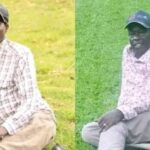The Government of Rwanda has strongly denied new accusations from the United Nations Human Rights Office (OHCHR) claiming that Rwandan troops were involved in mass killings in eastern Democratic Republic of Congo (DRC).
On August 6, 2025, OHCHR released a report saying that the armed group known as M23, allegedly supported by Rwanda’s army (RDF), killed 319 civilians between July 9 and July 21 in four villages in Rutshuru territory. According to OHCHR, many of the victims were farmers working in their fields.
On August 11, Rwanda’s Ministry of Foreign Affairs and International Cooperation issued a firm response, saying the allegations were baseless and lacked credible evidence. The ministry warned that such claims could damage the credibility of OHCHR itself.
“Putting RDF in these accusations without clear evidence is unacceptable,” Rwanda’s statement read. “It raises doubts about OHCHR’s credibility and the way it gathers information.”
📰 Also Read This:
Colonel Willy Ngoma, the M23 military spokesperson, also rejected the claims.
“We cannot even kill a Congolese chicken or goat,” he said. “We are the people’s army. We respect civilian life. We shed our blood to protect these people, not to harm them.”
The accusations come at a sensitive time. Rwanda and the DRC are currently trying to resolve their disputes through a peace agreement signed on June 27, 2025. Just last month, on July 19, the DRC government and the AFC/M23 coalition also agreed to hold talks in Qatar to work toward a lasting peace deal.
Rwanda says these latest UN claims threaten the fragile peace process and could derail negotiations meant to end decades of violence in eastern Congo.
On July 25, 2025, an organization called CVAR (Collectif des Victimes de l’Agression Rwandaise) accused M23 of killing more than 200 people in Binza, a group of villages in Rutshuru territory.
Six days later, the UN’s human rights office in the DRC (BCNUDH) reported that M23 fighters had killed 169 people, including Hutu farmers, using machetes and guns.
By August 6, OHCHR claimed that M23 was responsible for 319 civilian deaths, including 48 women and 19 children, based on information provided by BCNUDH.
CVAR’s president, Patient Komayombi, admitted that his group had given information to BCNUDH and even connected them to people on the ground. He claimed his data represented “about 80% of the reality” because killings were still happening in Binza.
However, CVAR could not provide a full list of victims. Komayombi explained that M23 controlled the area and blocked access.
CVAR’s offices are based in Beni — about 300 kilometers from Rutshuru — raising questions about how it gathers its information.
Komayombi had only a few photos showing 13 bodies, most of them men. He also shared a video supposedly filmed in July 2025 in Busesa, showing bodies on the road.
But African Facts, an independent fact-checking group, investigated and found that the video was actually recorded on September 15, 2024. When asked about the mismatch in dates, Komayombi claimed there was a misunderstanding.
CVAR was formed in early 2023 by people claiming to defend Hutu rights in Rutshuru. The group often releases statements saying Congolese Tutsis invaded the DRC to take land from local communities.
One of CVAR’s early key members, Héritier Donald Gashegu, is also the spokesperson for Nyatura CMC, an armed group formed by the FDLR in 2010. Both Nyatura and the FDLR are Hutu-led militias accused of anti-Tutsi ideology and violence.
Other CVAR members: Théoneste Bahati Gakuru and Barthelemy Sibomana Mushati, are wanted by Congolese military prosecutors for murder, kidnapping, and torture, allegedly in cooperation with Nyatura leaders.
While Komayombi denies that these men are active CVAR members, videos and public records show they have represented the group before.
On August 3, 2025, the Territorial Youth Council of Rutshuru (CTJR) also accused M23 of killing 296 people in Binza. CTJR’s president, Patient Twizere Sebashitsi, signed the statement.
CTJR and CVAR have a history of working together, even organizing joint meetings in Goma last year to lobby the European Union to remove sanctions against Nyatura leaders.
Local residents say FDLR and Nyatura fighters often wear civilian clothes when in the fields, making it hard to tell them apart from ordinary villagers.
Both groups have been active in Binza since late January, after M23 captured Goma. They use the area to prepare attacks, farm crops, tax residents, and trade goods.
These militias have also been accused of burning property. On July 10, they reportedly set fire to 20 houses in Kizimba, Rutshuru.
M23 says it has been fighting FDLR and Nyatura CMC across Rutshuru, recently warning civilians in Bwito to leave within five days to avoid being caught in the crossfire.
Rwanda argues that the OHCHR report is based on politically motivated, unreliable sources with known links to armed groups. Kigali believes that these false narratives are being used to undermine peace talks and justify continued hostility toward Rwanda.
As the situation unfolds, tensions remain high in eastern Congo, where decades of mistrust, ethnic divisions, and militia activity have fueled one of Africa’s longest-running conflicts.







